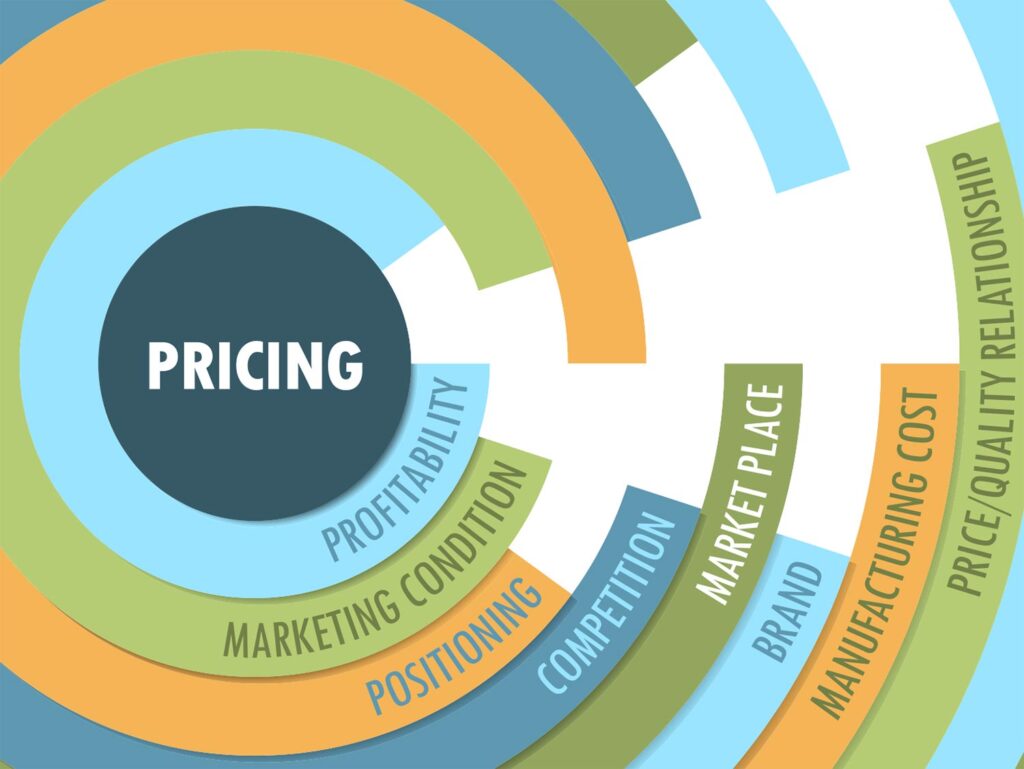You’ve come a long way since the inspiration for your business first struck. Your product or service has been developed and fleshed out, you’ve examined the market for demand and competition, and established a good idea of what reasonable pricing looks like for what you provide.
Whether you are examining pricing strategy options for the first time, or looking to revamp your existing one, developing and applying multiple “editions” for your service or product at different price levels should be on your radar. Many well-known subscription businesses use editions with great success.
We’ll go over some examples shortly, but first, what are editions? And why are they so popular?
Multiple editions are different product or service packages that customers can choose from to purchase. Editions are often delineated from one another by price—increasing price indicates access to more features, space, product, quality, capacity, and/or any other number of desirable inclusions for customers. Customers may also range from individual consumers to large companies.
The most common example of this is tiered pricing, used by a majority of Software as a Service (SaaS) businesses. For example, app developer Servoy offers three editions of their platform to meet the different needs of their potential customers:
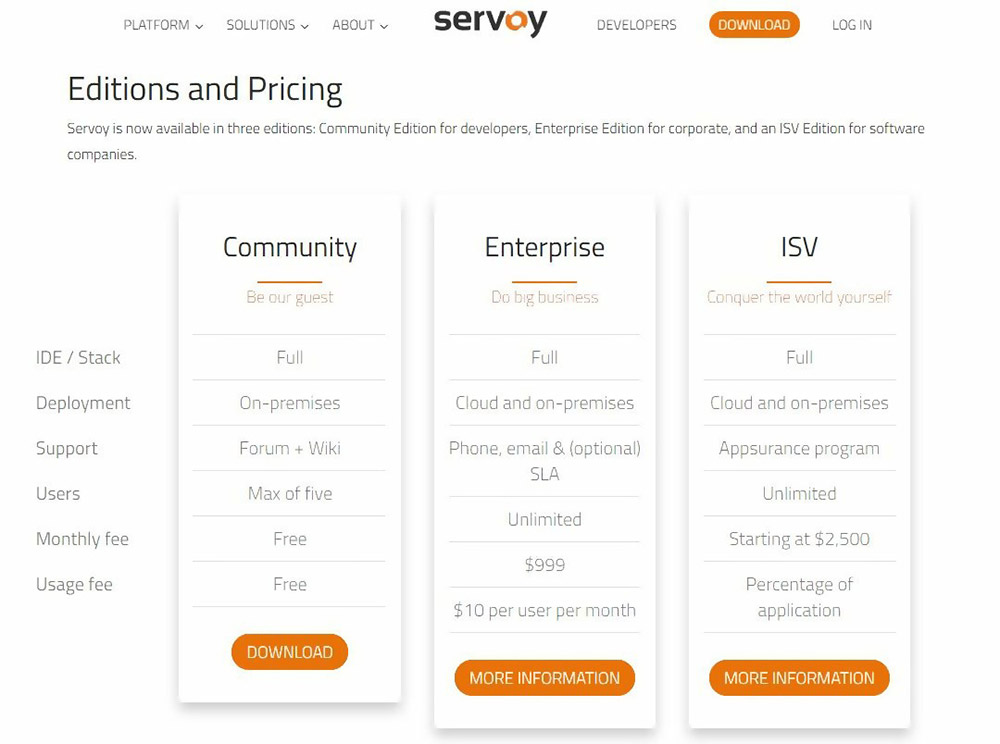
Notice the increase in product value as price increases: deployment goes from on-premises only for users of the free Community edition, but includes the cloud if a user upgrades to Enterprise or ISV. Support similarly increases, and the number of users permitted goes from 5 to unlimited.
Editions allow customers to choose a package that is right for their needs and budget, which is part of why they are a widely-used pricing strategy by SaaS businesses.
Giving Customers The Power of Choice
Customers feel empowered by choice, but there’s a delicate balance between tapping into that power and overwhelming shoppers.
Finding that balance can be accomplished by following a few practices:
1. Provide options, but not too many.
If you’ve shopped around for software subscriptions, you may have noticed that there are usually three editions to choose from, much like in the Servoy example above. There is a reason for this. While people want choice, research suggests that businesses shouldn’t provide more than five options at any one time to avoid overstimulating shoppers.
2. Focus on customer value, not cost.
Tapping into the power of choice allows you to refocus customer attention on what they gain, and save, rather than what they are spending. By listing the benefits unlocked with each edition, you assure customers that they receive value at each level, prompting them to purchase the best edition they can afford.
3. Highlight money saved.
For SaaS businesses, where increasing the number of people who have access to software is usually low-cost, providing editions that highlight the money saved per user at each level also helps customers feel that they are making a valuable choice.
4. Tap into the bandwagon effect.
Timekeeping app Timely uses another power-harnessing tactic when presenting edition choices to shoppers—highlighting the most popular edition:
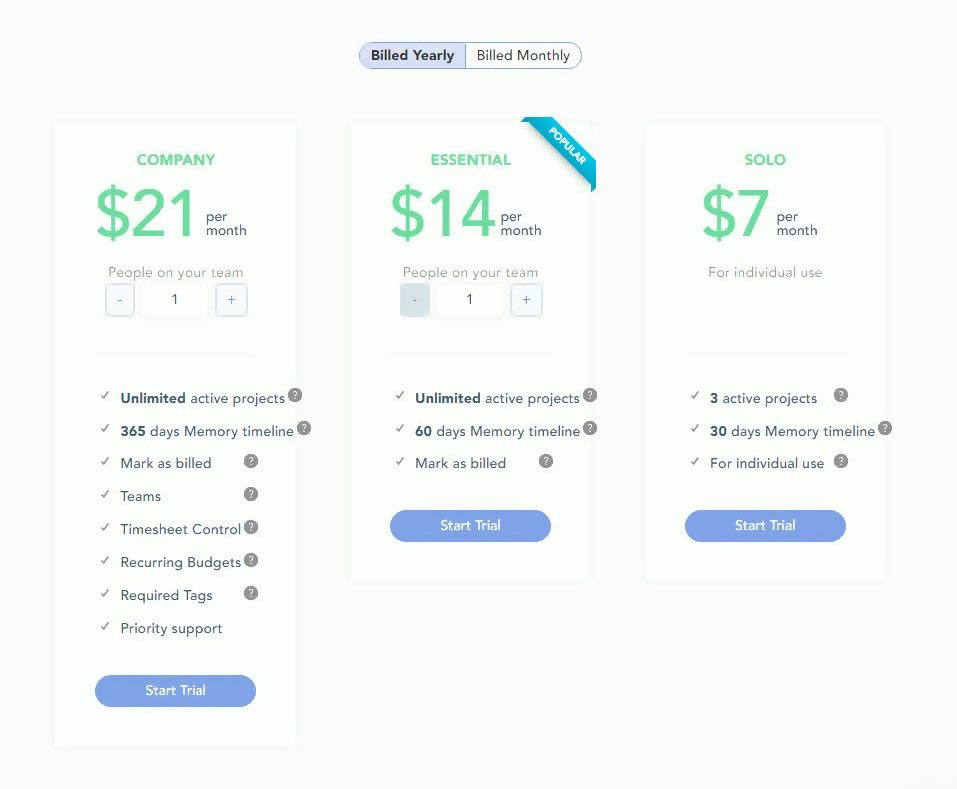
This common tactic is used by many SaaS, and even other, businesses. It helps customers feel confident that they’ve made a good decision, as it’s apparently backed by many others who came before them.
5. Build more choice into each option.
Timely also has another, unique approach: Shoppers can toggle to increase the number of people on their team, if they have one, to compare pricing depending on how many people will use the app. This is a great demonstration of a business using an edition presentation that works for everyone.
As you develop subscription editions, it’s important to consider your business model, market, and the benefits to customers that can be offered within different editions.
Considering Your Business Model and Market
Not all businesses are trying to attract individual, small business, and enterprise customers like Timely and Savoy. It’s important to keep your business’s unique market and offerings in mind.
For example, many telematics and Internet of Things (IoT) businesses require hybrid pricing: a mix of one-time, recurring, and perhaps even volume and/or usage-based charges. It can be tough to neatly package these pricing needs into editions and display them on a page.
Some IoT businesses are finding workarounds to that problem: Smart Home technology and service provider Hive has a multi-step checkout process for those interested in a yearly subscription for camera monitoring. Customers may or may not have already purchased the required “hub” that allows smart devices in the home to communicate with one another and a phone app. How does Hive handle this? Take a look:
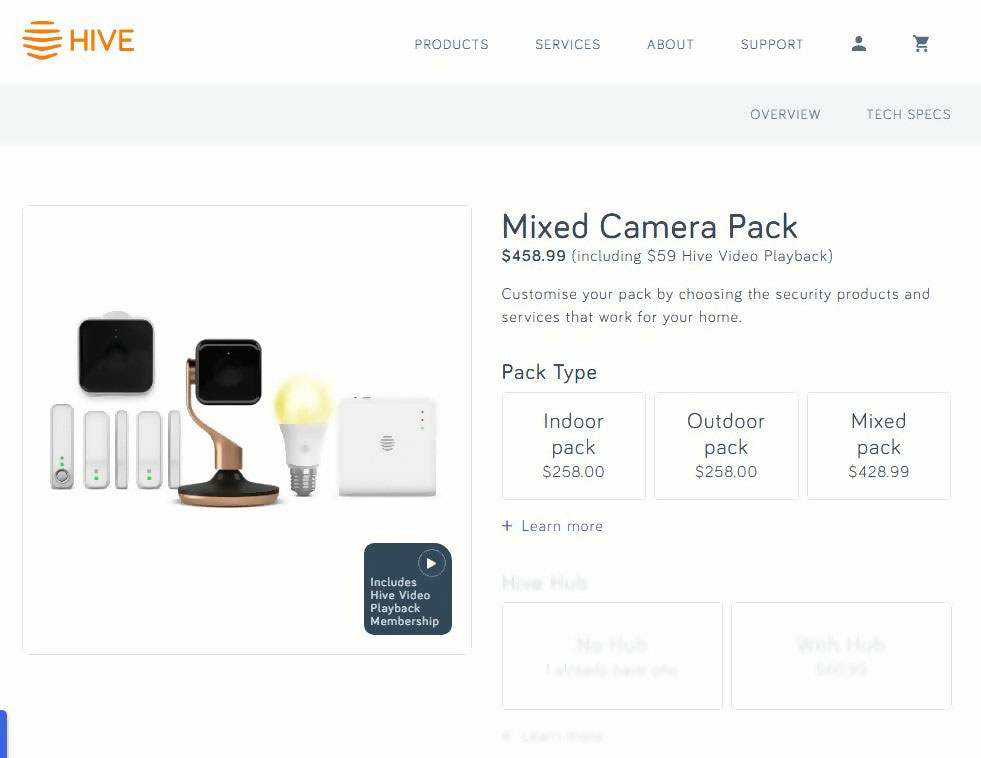
After someone has selected the Indoor, Outdoor, or Mixed pack, the “Hive Hub” option becomes clickable, allowing a shopper to indicate whether they need to make that one-time purchase or not.
Hive also uses the “highlight money saved” practice: the cost of the Mixed pack is lower than the cost of buying the Indoor and Outdoor packs at their individual prices.
Consider your business’s unique pricing needs as you develop your editions. Hive’s interface (similar to the kind used by online retailers to allow customers to select the color and size of products) might be the best way for your business to meet up-front hybrid pricing needs.
Considering the Benefits Your Business Offers
As mentioned earlier, your editions can also be priced based on benefits offered, whether they are features, space, product, quality, capacity, or something else. Timely, for example, offers a “marked as billed” feature for those who opt for the Essential edition instead of the Solo edition. A telematics business might offer increased coverage area for higher-priced editions, or increased reporting detail.
Even subscription boxes can provide more or higher quality products for “better” editions of their subscription.
While more expensive editions may be perceived as “better,” however, one business truism remains: quality matters at every level. Making sure your most affordable edition still provides value is critical to your business’s success, and the success of using editions as a pricing strategy.
Starting with a quality product or service and offering it at an affordable price lays a strong foundation. From there, other editions should tempt shoppers: Maximize this already great product with valuable add-ons!
Customers should see clear advantages to opting for a higher-priced edition, and of course, when they do, it’s up to your business to be sure you deliver on that expectation.
How do you help customers see the value in investing more? Through promotional tactics.
Promoting Your Editions to Customers
Once you have developed editions, it’s time to hammer down your pricing (if you haven’t already) and present everything in an exciting way to potential customers.
Here are a few tips for making that presentation work:
1. Don’t undersell your editions.
While you may be tempted to keep prices low and affordable, you must of course also consider your own costs and the need to be profitable. If something is priced especially low compared to your competitors, many customers can be put off by the “too good to be true” cost. This is especially relevant in the case of B2B (business to business) entities where professional service and presentation is important.
2. Lean on your mid-priced edition.
While your most affordable option should still be valuable, most businesses find that the middle option is their most popular. This edition should have complete functionality, and that should be visible in the description. The majority of your users are likely to choose this edition, and it will set their impression of your business and what they tell colleagues and write in reviews. Be sure to get it right.
3. Bring attention to the popular choice.
If your middle-of-the-road edition does turn out to be popular, be sure to highlight that. If you’re lucky like Zoho, however, you may find that your highest-priced edition winds up being the most popular. It’s ok to highlight that, as well:
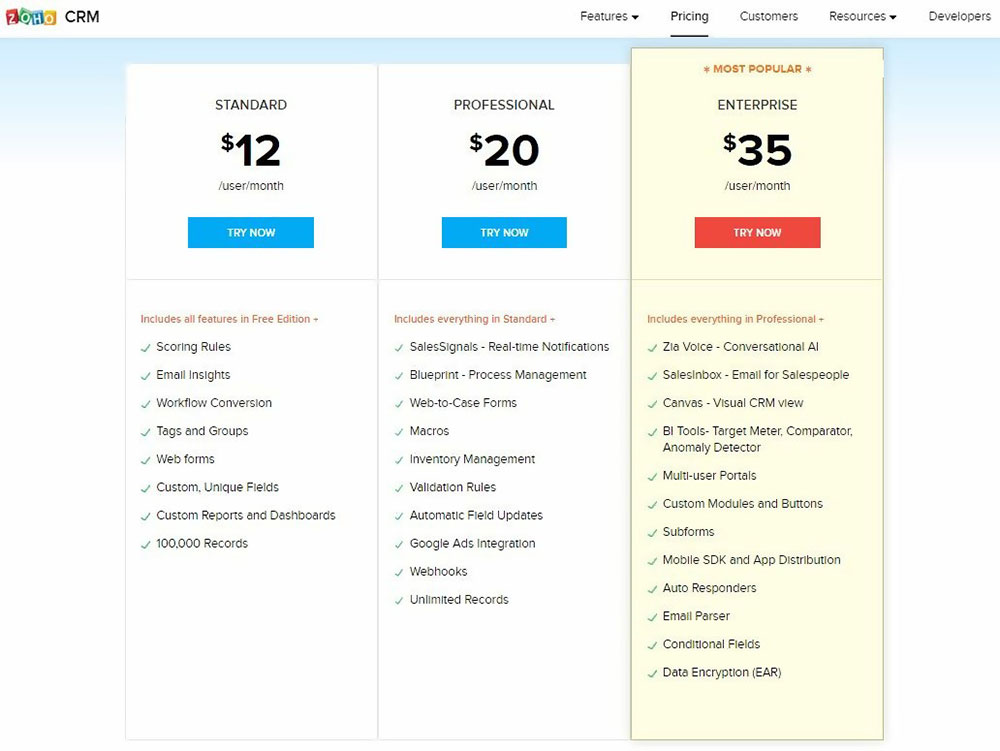
4. Use your highest-price edition to make other editions attractive.
Typically, the most expensive edition is priced in a way to make the other options look more attractive—this is a common tactic. Sometimes, however, customers want the absolute best they can get from a business. Either way, strategically pricing your best edition can substantially increase revenue.
Because of this, make sure that the price difference of your highest value edition is justified by very special features. They may not be features necessary to functionality—as those should be in the other editions—but they should be attractive enough to justify the purchase.
Using editions to empower customers with choice and showcasing the best your business has to offer simplifies the purchase process, meaning everybody wins. Design and price them right, and you may discover customers are willing to spend more for the high-value editions you’ve developed. Your back-end processes should allow you to respond to any market needs and make changes easily.
A flexible subscription management and recurring billing platform empowers the marketing and sales teams to quickly deploy pricing changes without negatively impacting important accounting processes like revenue recognition. This pricing agility is one of the features supported by an advanced recurring billing platform like Stax Bill.
Quick FAQs about Editions in Pricing Strategy
Q: What are “Editions” in Pricing Strategy?
Editions in pricing strategy are different product or service packages at varying price levels that customers can choose from. The increase in price often indicates access to more features, space, product, quality, capacity, among other desirable inclusions.
Q: How do Editions benefit both businesses and customers?
Editions enable customers to choose a package that fits their needs and budget, making them a popular pricing strategy. Businesses benefit from editions because they can cater to a wider range of customers, from individuals to large enterprises.
Q: Can you provide examples of businesses using Editions in their pricing strategy?
An example is the app developer Servoy which offers three different editions of their platform at varying prices. Another example is the timekeeping app Timely that provides multiple edition choices to shoppers.
Q: What is the importance of providing options in Pricing Strategy?
Providing options empowers customers by giving them the freedom to choose based on their needs and budget. However, businesses should strike a balance and avoid offering too many options to prevent overwhelming the customers.
Q: How can businesses highlight the value in their Pricing Strategy?
Businesses can highlight the value in their pricing strategy by focusing on customer value rather than cost, showcasing money saved, employing the bandwagon effect, and building more choice into each option.
Q: What are some tips for businesses when pricing their Editions?
Businesses should not undersell their editions, lean on their mid-priced edition, bring attention to the popular choice, and use the highest-price edition to make other editions attractive.
Q: What tools can businesses use to manage their Pricing Strategy?
Businesses can use a flexible subscription management and recurring billing platform like Stax Bill. This platform enables marketing and sales teams to quickly deploy pricing changes without negatively impacting accounting processes.
Q: What factors should businesses consider when developing subscription editions?
When developing subscription editions, businesses should consider their business model, market, and the benefits to customers that can be offered within different editions.
Q: How can businesses attract customers to higher-priced Editions?
Businesses can attract customers to higher-priced editions by ensuring clear advantages to opting for them. They should also deliver on the expectation once the customer opts for a higher-priced edition.
Q: What promotional tactics can businesses use to highlight the value of their Editions?
Businesses can use promotional tactics such as not underselling their editions, leaning on their mid-priced edition, bringing attention to the popular choice, and using the highest-price edition to make other editions attractive.
